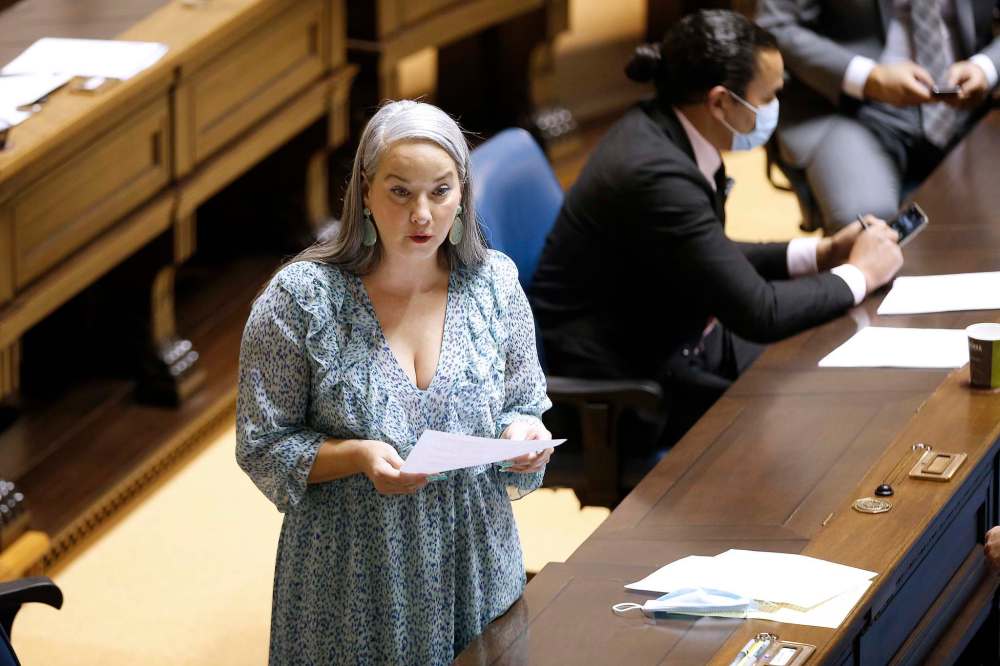Gutting estimates is an attack on democracy
Read this article for free:
or
Already have an account? Log in here »
To continue reading, please subscribe:
Monthly Digital Subscription
$0 for the first 4 weeks*
- Enjoy unlimited reading on winnipegfreepress.com
- Read the E-Edition, our digital replica newspaper
- Access News Break, our award-winning app
- Play interactive puzzles
*No charge for 4 weeks then price increases to the regular rate of $19.00 plus GST every four weeks. Offer available to new and qualified returning subscribers only. Cancel any time.
Monthly Digital Subscription
$4.75/week*
- Enjoy unlimited reading on winnipegfreepress.com
- Read the E-Edition, our digital replica newspaper
- Access News Break, our award-winning app
- Play interactive puzzles
*Billed as $19 plus GST every four weeks. Cancel any time.
To continue reading, please subscribe:
Add Free Press access to your Brandon Sun subscription for only an additional
$1 for the first 4 weeks*
*Your next subscription payment will increase by $1.00 and you will be charged $16.99 plus GST for four weeks. After four weeks, your payment will increase to $23.99 plus GST every four weeks.
Read unlimited articles for free today:
or
Already have an account? Log in here »
Hey there, time traveller!
This article was published 28/04/2021 (1688 days ago), so information in it may no longer be current.
Every year, the Manitoba government releases detailed departmental spending estimates following the unveiling of its budget. It’s a normal and important part of the budgeting process.
The line-by-line projections provide the public with specific information about how government plans to spend taxpayers’ dollars, including the nuts and bolts of staffing, program costs and infrastructure projects. Unlike annual budget documents, which provide limited information, departmental estimates provide detailed breakdowns.
Province withholds detailed budget info in shrunken spending estimates

Posted:
BREAKING with decades of tradition, the Pallister government is withholding detailed budget information from the public — including estimated staffing and spending levels for critical areas of the province’s pandemic response.
The budget represents the broad strokes of spending; estimates are the nitty gritty.
For the first time in recent memory, most of that information is being withheld. Without explanation, the Pallister government has released abbreviated versions of departmental estimates, with most of the granular reporting removed.
For example, last year’s Health Department estimates document was chock-full of detailed spending plans that filled a 145-page book. This year, it was whittled down to a 32-page summary.
Without that level of detail, the public is prevented from knowing how much government plans to spend in areas such as fighting the COVID-19 pandemic, including appropriations for personal protective equipment, contact tracing, lab testing or critical care in hospitals.
Last year, the Families Department provided detailed spending plans in a 128-page document, which included information about child welfare and child-care spending. This year, government released a 33-page summary instead.
Similar formats were released for all departments.
The province has offered no valid reason for this unprecedented move. Finance Minister Scott Fielding, when questioned about it in the legislative assembly this week, said the change reflects “best practices” adopted by other provinces. When asked later by reporters who in Manitoba was calling for the changes, Mr. Fielding could cite none. The minister was unable to provide any rational justification for the move.
Absent a valid explanation, the only reasonable conclusion to draw is that government is deliberately keeping Manitobans in the dark about how it plans to spend their money. That is an unconscionable abrogation of government’s duty to provide the public with complete and accurate information about the taxes and other revenue it collects, and how it plans to allocate resources. It is an attack on democracy.
So offensive to the principles of openness and transparency are the proposed amendments that even Manitoba Ombudsman Jill Perron has flagged them (in a six-page letter to government) as having “significant” implications for access to public records.
The withholding of public information has become a disturbing trend with this government. Throughout the pandemic in particular, the province has consistently refused to release public records, such as statistics around contact tracing, infection-rate projections and regional test-positivity rates. The selective release of information is rooted in government’s attempts to control the public message (for its own political benefit) as opposed to following generally accepted disclosure principles.
It’s undoubtedly the same reason the Progressive Conservative government has introduced a bill to make it more difficult to access public records through the Freedom of Information and Protection of Privacy Act. The proposed changes allow further delays to process applications for information and include vague exemptions that could be used as blanket refusals to release public records.
So offensive to the principles of openness and transparency are the proposed amendments that even Manitoba Ombudsman Jill Perron has flagged them (in a six-page letter to government) as having “significant” implications for access to public records.
Information is power. When government unjustifiably withholds public records, it weakens society’s ability to hold elected officials accountable. Refusing to disclose detailed spending estimates darkens another window the public has had into the operations of government.







